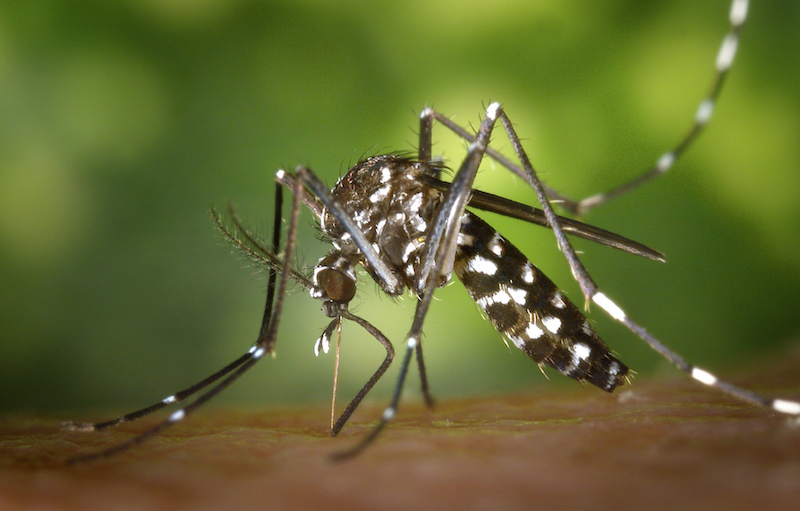Texas Faces Another Unpredictable Mosquito Season
By Kayla Meyertons
Reporting Texas

Photo of mosquito courtesy Pexels.com.
Mosquito populations exploded last summer when heavy rains hit the Texas coast. With the start of the 2019 mosquito season upon us, state public health officials plan to proceed as usual — expecting the worst.
How bad will it get? Trying to predict the severity of Texas’ mosquito season (typically February through October) is a murky science at best. Yet there’s no denying its importance given threats to public health posed by the Zika and West Nile viruses and other serious mosquito-borne diseases.
Factors like floods, droughts, predators and bird migration all play a role in mosquito-borne disease transmission, says Chris Vitek, associate professor of biology at the University of Texas Rio Grande Valley.
Accurate predictions are hard to come by, Vitek said, because of “this huge complex ecological web of interaction that influences not just mosquito numbers but disease transmission and risk for disease as well.”
Mosquitoes of the genus Culex, which transmit West Nile virus, are known to breed in standing water left behind after intense flooding, says David Herrin, a professor of molecular biosciences at the University of Texas at Austin.
“This [season] is going to be horrible because it’s wet already,” Herrin said. “People are going to get bit like crazy. … There’s a good correlation between precipitation and mosquito populations and viruses.”
At present, public health officials aren’t forecasting a worrying uptick in mosquito-related illnesses. Texas Department of State Health Services spokesman Chris Van Deusen says the department did not see an increase in the number of West Nile cases following Tropical Storm Harvey in September 2017.
“We don’t typically see a big connection between flood events and illnesses like West Nile or Zika just because of the types of mosquitoes that are involved,” Van Deusen said.
No one disputes the stakes are potentially high. West Nile virus is now endemic to the United States, and Texas had 135 cases of West Nile illness and six deaths in 2017. There were 131 cases with five deaths in Texas last year.
Fortunately, the mosquito Aedes aegypti, which transmits Zika virus, is unlikely to breed in pools of standing water because it’s a container breeder, laying its eggs in artificial containers like tires and dog dishes. Texas reported three travel-related cases of Zika in 2018, all originating outside the state.
Medical entomology consultant William Sames says mosquitoes need aquatic habitats, not saturated soil, for development. While eggs laid in dry periods will hatch and develop in standing water, these population explosions are short-lived.
“If [standing water] is in there too long, it starts to get filled with aquatic predators,” said Sames, who advises companies on vector control from his ranch in Real County. “They eat mosquito larvae like candy.”
Droughts can also amplify disease transmission within reservoir populations, Vitek said.
“It drives both mosquitoes and animal hosts together around the same water sources,” Vitek said. “That’s going to intensify mosquito and bird interactions, increasing the potential for disease.”
The interplay of these factors can create the most risk, Vitek says. Luckily, mosquito control districts operate in 15 mosquito-prone counties across Texas, where public health officials prepare year-round for the annual mosquito onslaught through surveillance, control, aerial spraying, education and research efforts.
“Making predictions months out in advance is difficult,” Vitek said. “But through regular surveillance activities [we can] ideally predict what might happen in the next two to three weeks.”